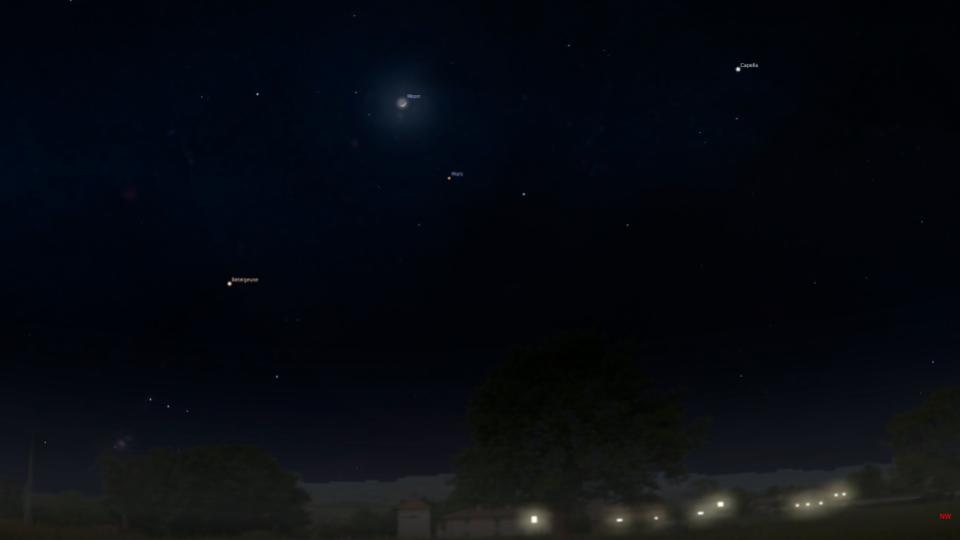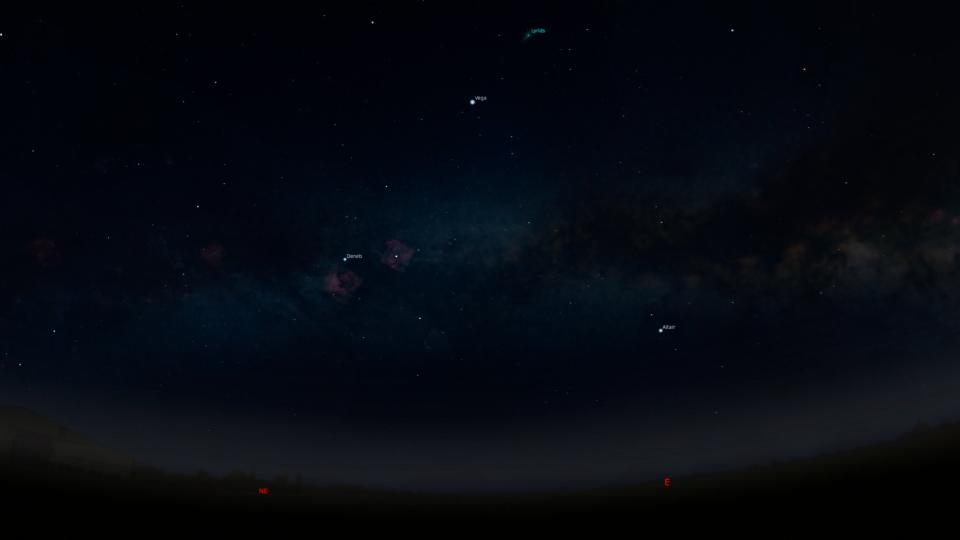
Each week we try and bring you some new ideas for some things to go out and see in the sky. Right now a particularly important moon shines for millions of people around the world. In the early evening, a crescent moon can be seen setting in the west, setting a little later every night. This moon is the one that marks this year’s celebration of Ramadan. This holiday spans from the disappearance of the moon through a lunar cycle, until a moon is once again seen in the sky. To those of you who celebrate, Ramadan Mubarek. To everyone else, go out and see the crescent. It’s pretty in the late evening twilight.
Also in the west, Mars hangs bright and red below the Moon, and when you look at it, you’re seeing the only other place in our solar system to have a helicopter.
For those of you who are more into seeing the sky in the morning, this week offers a special show. Right now the Earth is passing through the diffuse cloud of material left scattered by comet c/1861 G1 Thatcher. This comet has a 415-year orbit that carries it out past Eris, so we haven’t actually imaged it, but we know from this meteor shower, the Lyrids, that it left a super impressive spray of debris in the inner solar system.
The Lyrids run from April 16th through April 30th. These meteors will be best on the mornings of April 21st and 22nd, with an average of 5-20 meteors/hour. The meteor’s radiant – that apparent point in the sky where the meteors come from – is in the constellation Lyra just next to the bright star Vega, making it easy to find. The moon will set early enough in the evening that it won’t interfere with observing the Lyrids during the dawn hours.

The appearance of Vega in the morning reminds us that the summer sky is coming. While you’re out there seeing the Lyrids and bright Vega, look lower in the sky to the east. To the left and partway down is Deneb, and to the left and farther down is Altair. This triangle of stars is referred to as the “summer triangle,” and while it is often hidden by light pollution, the path of the Milky Way passes through this part of the sky. We’ll talk more about this asterism of stars in June when it is more of an evening object.
There are also three novae visible using small telescopes, and we’ll get more into those next week. For now though, plan to go out, lay back, and look up.
More Information
Moon Phases (timeanddate)




 Join the Crew!
Join the Crew!
 Escape Velocity Space News
Escape Velocity Space News
0 Comments